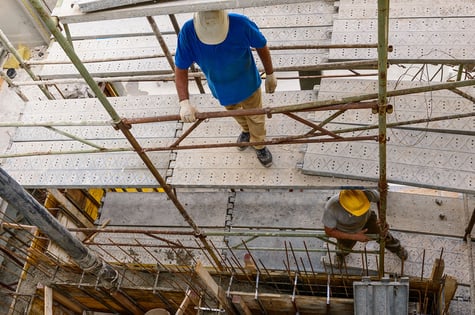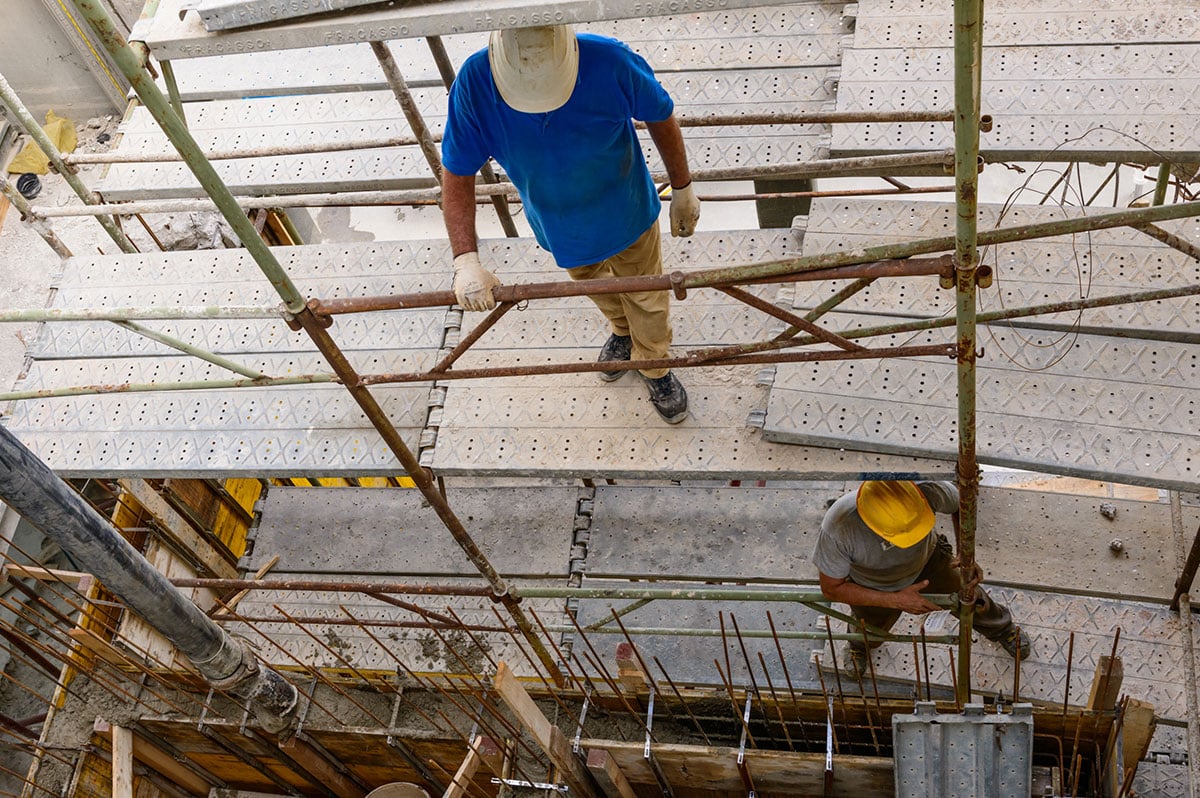 Rooftops are dangerous places and various organizations have done their part to raise awareness and eliminate preventable deaths, and OSHA is no exception. In fact, there are over one thousand OSHA regulations addressing fall safety. That’s more than anyone can keep track of, and even OSHA knows that. That’s the motivation behind the agency’s fall prevention campaign: Not giving companies permission to ignore or violate regulations, but boiling it all down to easy-to-understand, easy-to-implement, common sense guidelines on rooftop safety.
Rooftops are dangerous places and various organizations have done their part to raise awareness and eliminate preventable deaths, and OSHA is no exception. In fact, there are over one thousand OSHA regulations addressing fall safety. That’s more than anyone can keep track of, and even OSHA knows that. That’s the motivation behind the agency’s fall prevention campaign: Not giving companies permission to ignore or violate regulations, but boiling it all down to easy-to-understand, easy-to-implement, common sense guidelines on rooftop safety.
Plan, Provide, Train
OSHA broke fall prevention down to three simple steps: plan, provide, and train.
- Plan: Fall prevention starts with carefully planning the job so that you don’t find yourself in the position of having to choose between causing a delay and taking a safety shortcut. Know exactly what you’re going to do during each step of the project, who’s going to do it, and what safety measures you’ll need to implement.
- Provide: It’s the employer’s responsibility to provide workers with the necessary safety equipment. A lot of employers think they’re providing the right safety equipment, but they don’t realize how low the threshold is: Fall protection is required beginning at six feet. And that’s not just an arbitrary number OSHA came up with to make things difficult for employers; that’s a height at which serious injury – or even death – can occur.
- Train: Even the best equipment can’t do its job if workers aren’t using it correctly. It’s critical to train your employees on recognizing hazards, fall prevention best practices, and the right way – and the right time – to use the equipment.
Train the Trainer
As part of their initiative to promote rooftop safety, OSHA provides a free fall prevention training guide in both English and Spanish. It’s a “train the trainer” to help employers train their workers on fall prevention. The training is organized into a series of “Toolbox Talks,” each of which is broken into three parts:
- An example of a preventable fall that resulted in an injury or fatality
- Related guidelines for preventing falls
- An opportunity for employees to make comments or suggestions that relate the guidelines to their own work environment
Where to Start?
Obviously, there are many topics regarding rooftop safety. These, however, are the ones OSHA prioritized for their campaign, so it’s safe to assume they’re a good place to start. Keep one thing in mind while you’re reading: One of the main reasons employers unintentionally violate OSHA regulations is that they underestimate the threshold at which they’re required. Watch for any of those, “Oh, I didn’t realize that” facts.
Ladders
Ladder safety starts with the ladder itself. Ladders with any of the following problems should immediately be taken out of service:
- Loose, missing, or worn rungs, cleats, nails, bolts, screws, or side rails
- Corroded metal parts
Using ladders correctly is also a big part of fall prevention:
- Straight ladders should extend at least 36 inches beyond the support point.
- Keep the area around and beneath the ladder clean and unobstructed. If pedestrian traffic is a possibility, use barricades.
- Don’t extend the ladder’s reach by placing it on a box or any other object.
- Don’t apply stickers or decals (a good example of an “I didn’t know that” point).
- Maintain an adequate angle: the base of a straight ladder should move out one foot for every four feet of vertical height.
- Secure the top so it can’t shift.
Scaffolding
- Scaffolds must be designed to be adequate for the weight they’re supporting.
- Ties, guides, and braces must be installed according to the directions from the scaffold’s manufacturer.
- Build scaffolds only on solid, stable surfaces.
- Install rails on all open sides of the scaffold.
- If people will be working underneath the scaffold, follow all guidelines for falling object protection (and use overhead protection if that’s needed).
- Inspect the scaffold before each use.
- Don’t use scaffolds to store tools or materials.
- Use access ladders; climbing off the end frame is against OSHA regulations.
- Clear any ice and snow, and sand wet planks.
- Have all workers get off of mobile scaffolds before moving them.
Roofing Work
- Make sure workers recognize fall hazards: unprotected leading edge work, unprotected wall or floor openings, hoist areas, uncovered holes, roof and elevator openings, inadequate working surface, unprotected ramps and runways, dangerous equipment, formwork and reinforcing steel, excavations, wells, and pits.
- Any such hazard should be eliminated, if possible. If not, it’s the employer’s responsibility to provide fall restraints, including anchorages, body harnesses, connectors, and deceleration devices. Additional fall prevention equipment includes guard rails, safety nets, warning lines, controlled access zones, safety monitors, and hole covers.
Falls are the leading cause of death in the construction industry, and most can be prevented. Yes, there are a lot of OSHA regulations. But most of them make sense if you think about it. Following these common-sense guidelines will go a long way toward helping you achieve OSHA compliance.





